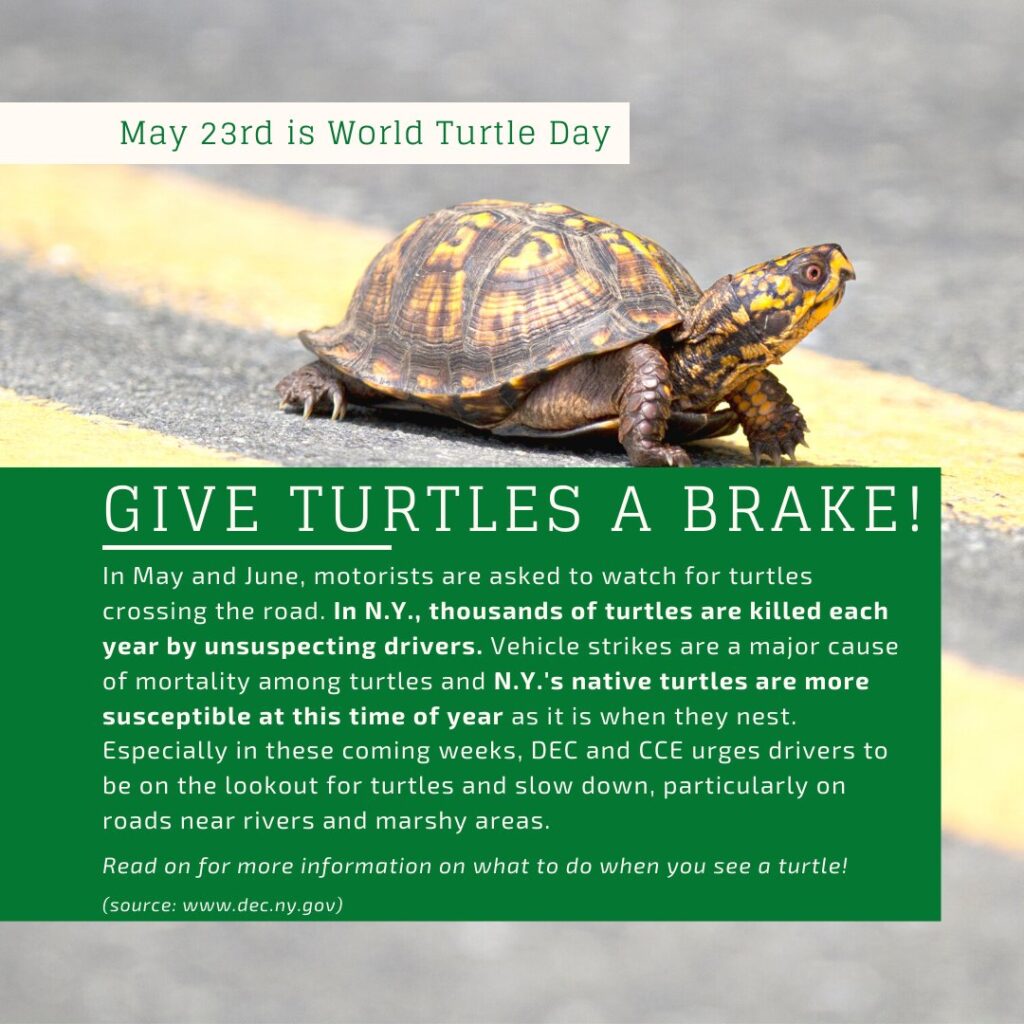
In May and June, motorists on the East End should be on the alert for turtles crossing the road.
Turtles are long-lived and well-adapted to their natural environment, as they can retreat to the safety of their shell when threatened by predators. But the turtle’s shell provides no protection against being struck by a car or truck while crossing roadways. In New York, thousands of turtles are killed each year when they are struck by vehicles as they migrate to their nesting areas, which is one major reason why New York’s turtle populations are in decline.
What You Can Do to Help Local Turtle Populations
- Be on the lookout for turtles and slow down, especially on roads near wetlands.
- If you see a turtle in the road or shoulder and you can safely stop your vehicle, please consider moving the turtle to the shoulder of the road in the direction it is facing.
- Picking the turtle up by its tail may frighten or injure it. Most turtles, other than snapping turtles, can be picked up by the sides of its shell.
- Use extreme caution when approaching snapping turtles. Either stand watch to alert other vehicles while a snapping turtle crosses the road or learn how to safely move a snapping turtle using a car mat (see the New York Department of Environmental Conservation website for a link to a video: https://dec.ny.gov/nature/animals-fish-plants/amphibians-reptiles).
- Do not take a turtle home.
What You Can Do to Help Local Turtle Populations:
Watch for turtles and slow down, especially on roads near wetlands. If you see a turtle on the road or shoulder and you can safely stop your vehicle, please consider moving the turtle to the shoulder of the road in the direction it is facing. Picking the turtle up by its tail may frighten or injure it. Other than snapping turtles, most turtles can be picked up by the sides of their shells.
Use extreme caution when approaching snapping turtles. Either stand watch to alert other vehicles while a snapping turtle crosses the road, or learn how to safely move a snapping turtle using a car mat (see the New York Department of Environmental Conservation).
Do not take a turtle home.
For more information, visit Long Pond Greenbelt.
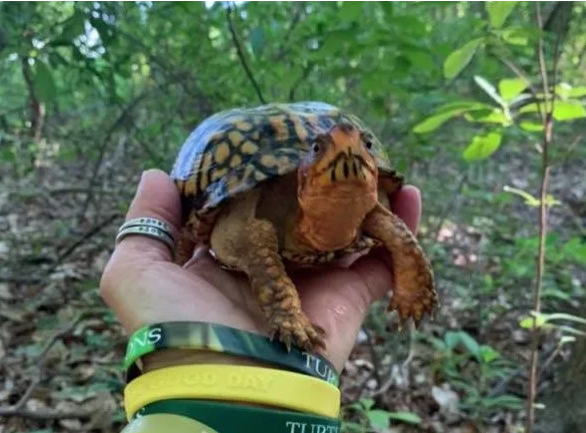
Turtle Rescue of the Hamptons
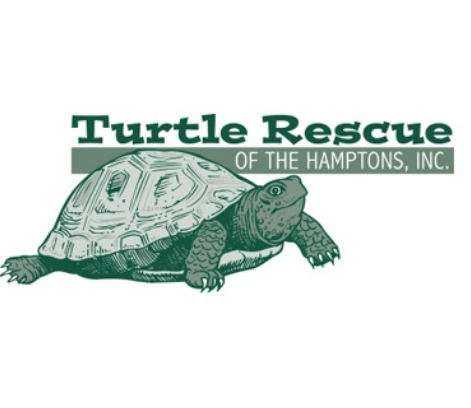
Learn More About Turtle Rescue of the Hamptons
Turtle Rescue of the Hamptons is a not-for-profit 501(c)(3) EIN# 45-4340752 charitable corporation located on the North Fork of Long Island. The mission is to rescue, rehabilitate, and release wild chelonian species native to Long Island, to provide a sanctuary with a high quality of life for those who have sustained a permanent disability, and to allow injured animals to live out their lives with dignity and respect. The staff work to promote a safe and healthy natural environment by providing public education services regarding the threats and challenges facing our native populations.
Help one today!
The state-of-the-art rehabilitation facility, Turtle Manor, is a charming c.1920 farmhouse fully converted and equipped to rehabilitate over 200 turtles annually. The sanctuary is located on one acre of natural woodlands and manmade ponds and is home to the permanently disabled residents. Turtle Rescue of the Hamptons is also a proud member and supporter of 22 national charities.
Turtles are keystone species, dependent on the ecosystem. They are indicator species, organisms that reflect the environmental conditions of their surroundings. They are gardeners, dispersing seeds and fertilizing through digestion and producing nitrogen and phosphorus. The turtles are part of the cleanup crew, eating dead fish and plants and cleaning the water of bacteria.
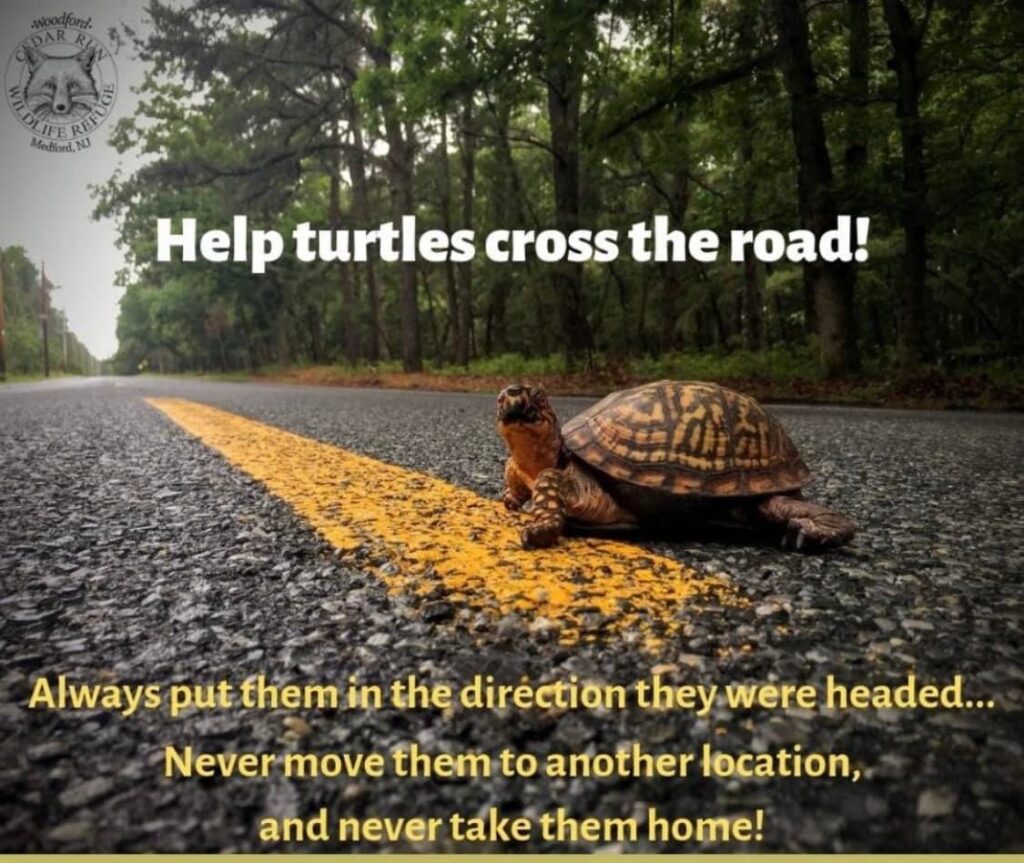
For additional information about Turtle Rescue of the Hamptons, visit the website:
Contact: Karen Testa – Founder @ turtlerescueofthehamptons@aol.com Telephone # 631-779-3737
Post a Sign! Help save our endangered turtles
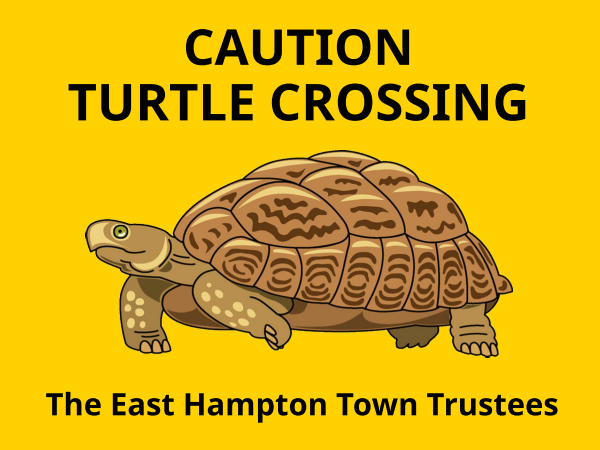
Yard signs with posts are available for a donation of $15.00 from the East Hampton Town Trustees office: 267 Bluff Road – Amagansett.
All donations go to the East Hampton Town Trustees Scholarship Fund, which will award a graduating student of East Hampton High School (EHHS) with a scholarship for higher education or college tuition.